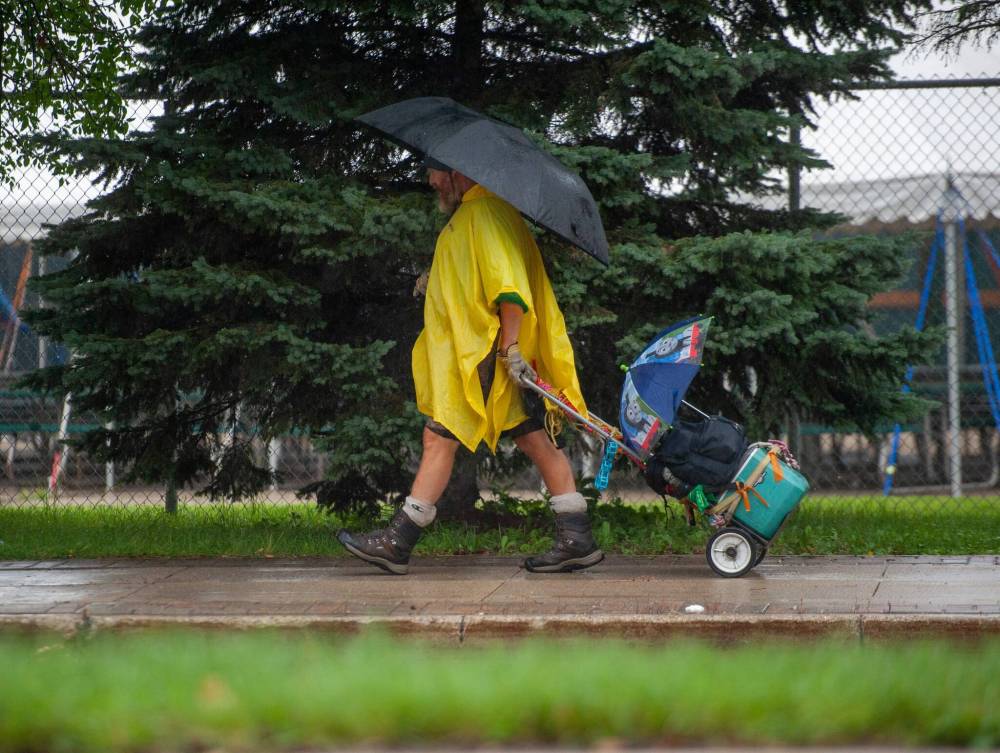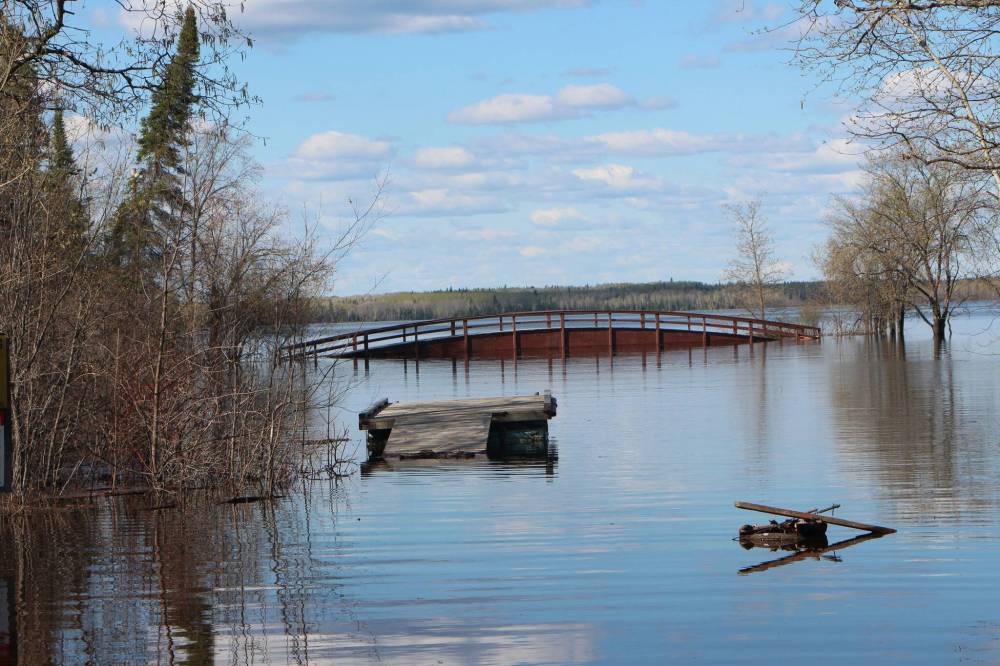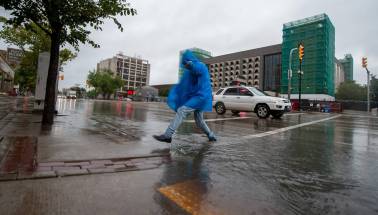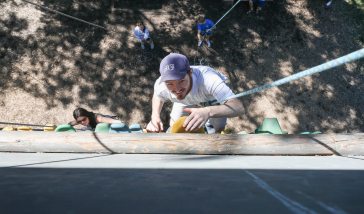Waving goodbye to waterlogged, yet warm summer 2022
Read this article for free:
or
Already have an account? Log in here »
To continue reading, please subscribe:
Monthly Digital Subscription
$0 for the first 4 weeks*
- Enjoy unlimited reading on winnipegfreepress.com
- Read the E-Edition, our digital replica newspaper
- Access News Break, our award-winning app
- Play interactive puzzles
*No charge for 4 weeks then price increases to the regular rate of $19.00 plus GST every four weeks. Offer available to new and qualified returning subscribers only. Cancel any time.
Monthly Digital Subscription
$4.75/week*
- Enjoy unlimited reading on winnipegfreepress.com
- Read the E-Edition, our digital replica newspaper
- Access News Break, our award-winning app
- Play interactive puzzles
*Billed as $19 plus GST every four weeks. Cancel any time.
To continue reading, please subscribe:
Add Free Press access to your Brandon Sun subscription for only an additional
$1 for the first 4 weeks*
*Your next subscription payment will increase by $1.00 and you will be charged $16.99 plus GST for four weeks. After four weeks, your payment will increase to $23.99 plus GST every four weeks.
Read unlimited articles for free today:
or
Already have an account? Log in here »
Hey there, time traveller!
This article was published 01/09/2022 (1192 days ago), so information in it may no longer be current.
Ah, summer, that magical time when Winnipeg is deluged with rain, your flowers drown in saturated soil and you experience fewer of the hottest days than normal.
That’s not the summer many wished for after enduring a long cold winter, but it is the summer they got in 2022.
It was also a season that, in the end, was slightly hotter than normal overall and one where locals — after more than two years of tight COVID-19 restrictions — were able to come out and enjoy large festivals under a summer sun again.
Lynne Skromeda, executive director of the Winnipeg Folk Festival, said where sometimes in the past the event has been cursed with rain, this year the precipitation fell before and after, with just a smattering on the Sunday morning.
“We had someone looking after us this year,” Skromeda said, noting the weather was especially great because it was the first festival since summer 2019, several months before the pandemic began.

“We ended up with the second highest attendance on record. And the weather was nearly perfect: 27 C, with some cloud cover to help people from the sun.”
The weather did impact set up in early July, Skromeda said. Festival crews had to contend with having to drain some areas, while setting up others in wet conditions.
But after two years of not being able to hold the music festival because of COVID restrictions, “there was a lot of dedication and determination. We got it all done.”
The summer of 2022 started wet.
It wasn’t supposed to be that way. As late as the end of March, forecasters thought flooding on the Red River wouldn’t be any worse than last year.
Then the Colorado lows came, early ones with snow; later ones with rain.
With 246.9 millimetres of rain, it was the second wettest spring in the city since records were kept. (The record is 325.4 mm, set in 1896.)
And the precipitation continued into the first part of the summer.
By the end of August the city had recorded a total of 656 mm of precipitation, said Scott Kehler, president and chief scientist at Weatherlogics.
“Normal precipitation from now until the end of the year is 135 mm,” Kehler said. “So, if we received normal precipitation, plus the 656 mm we’ve already had, that would push us well past the record of 723.3 mm.”
The wet spring and the summer precipitation also caused flooding on the Red, Assiniboine and Winnipeg rivers. The Red crested with its sixth-highest volume since record keeping began.

The Winnipeg River had its largest flood on record, resulting in the province closing the north part of the Whiteshell Provincial Park, leaving property owners not able to get to their cottages for weeks.
In late July, some communities in southern Manitoba were hit by a deluge of rain. Teulon recorded 58.2 mm of rain in 24 hours on July 19, leaving ditches in the town filled to the top. Libau had the most in the province, with 140 mm.
Farmers, who were delayed getting on their fields by the spring precipitation, saw many of their crops drowned by excessive rain.
Michelle Stainton, project management engineer with the Winnipeg public works department, said some street renewal projects were hampered by the wet conditions at the beginning of the summer, but they quickly got on track and have been completed or are set to finish soon.
“At the beginning of projects, we’re just ripping things up so it might be muddy, but it doesn’t affect us.”
Recent wet conditions have only affected the “day-to-day operations… It’s still too early to say how it will affect them. We are still only two-thirds through our construction season. We won’t know how the progress was affected until a month from now,” Stainton said.
Wet conditions in the spring and summer can result in swarms of mosquitoes, but David Wade, city superintendent of insect control, said it has still been a normal year for the pests.
“We have had to do two mosquito control programs this summer, but that’s average for us,” Wade said, noting the second round of fogging is currently ongoing.

“Fogging in September does not happen as often, but it varies depending on the weather. This should be the last fogging of the year.”
The soil was so saturated it’s not surprising that when the heat came, the moisture got into the air and humidity levels spiked.
It was so humid on July 18, the city came close to breaking its decades-old record, Kehler said. In the end, heat-drenched Winnipeggers could only settle for a tie with July 1966’s 26.1 C dew point record.
“Winnipeg also finds a way to frustrate weather-wise,” he said. “Last year, we only tied the record for 30 C days and this year, we just tied the humidity record.”
There were only five days 30 C or hotter this summer, when normally there would be 13, Kehler said. Last year, up until the end of August, there had been 34.
Even with fewer 30 C days, it was still a warm summer, he added.
“The summer as a whole has ended up about half-a-degree warmer than normal. This summer’s average temperature was 18.8 C, while the normal is 18.4 C. The average low was 12.8 C, which is 0.8 C warmer than normal,” he said.
Ominously, Kehler said the back-to-back string of two out-of-the-ordinary summers in a row — 2021’s drought, followed by plenty of precipitation this year — could continue in 2023.
The World Meteorological Organization said earlier this week La Nina conditions, which have seen a cooling of ocean surface temperatures in the eastern and central equatorial Pacific Ocean for two years, are predicted to last until the end of the year. The first so-called triple dip this century of three consecutive years of impact on climate conditions.
“We’ve seen such wild weather going from extreme drought to wet. Who knows what next year could be?” Kehler said.
kevin.rollason@freepress.mb.ca

Kevin Rollason is one of the more versatile reporters at the Winnipeg Free Press. Whether it is covering city hall, the law courts, or general reporting, Rollason can be counted on to not only answer the 5 Ws — Who, What, When, Where and Why — but to do it in an interesting and accessible way for readers.
Our newsroom depends on a growing audience of readers to power our journalism. If you are not a paid reader, please consider becoming a subscriber.
Our newsroom depends on its audience of readers to power our journalism. Thank you for your support.







